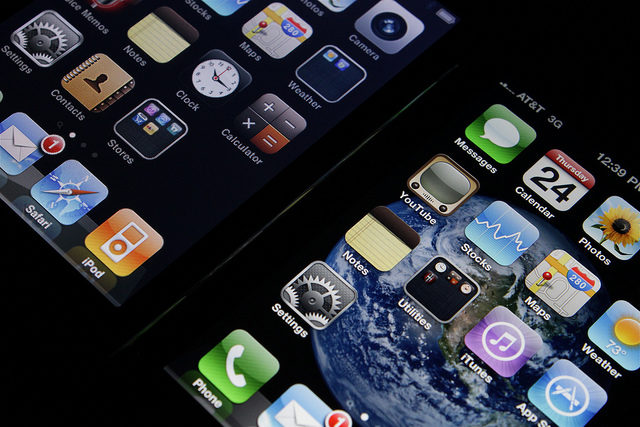In the age of tiny attention spans and touch-screen mobile devices, news apps have deeply influenced the way we read and check the news. Aggregation apps like Flipboard and Zite, and ones from publications like the Toronto Star, La Presse or The Globe and Mail, are much more accessible and adaptable than print and broadcast news.
With the ability to modify our home feeds to deliver information whenever we want, these apps are fundamentally changing the way news is produced and what headlines and stories we see. Yet it seems that the more journalistic, newspaper-based news apps have a long way to go—their ratings on Apple’s App Store range from two to three stars out of five, with the aggregated, customizable apps rated much higher. Currently, the top news app in Canada is Flipboard, a “personal magazine” where you can keep up on the news, follow topics of interest and share stories, videos and photos. Flipboard has also recently acquired Zite, originally owned by CNN.
Although Flipboard is easy to navigate, the trending stories are sometimes filled with news about the Kardashians or “How to Look Better Naked.” The design and entertainment value is put first, and it filters out the most highly read stories while also taking into account your preferred topics. When hard journalism is put first, the design and reader experience seems to falter. Reviews on the CBC News and Globe apps say they crash easily or just simply don’t work well.
So what would the perfect news app look and feel like, from the perspective of a journalist?
Customizable and Smart
Most news aggregation apps have the ability to customize what news topics show up in your feed. However, it can get confusing scrolling through the jumble of headlines, where an article about puppies could precede a major technological or medical breakthrough. Plus, you have to constantly add new topics manually. The perfect news app would learn based off your social media interactions and every news article you read in the app. It would take note of which stories you read quickly or took your time with and adapt based on the number of views as well as whether a story was shared recently.
A Focus on Journalism
Journalists would have a say in the design, creation and management of the app. This would ensure a good mix of top stories going out every day, and there would be the option to follow any stories from newspapers, magazines and blogs. Although most apps use software and code to determine what stories you see, news organizations’ headlines would show up first, and link back to their original sites so it wouldn’t steal traffic away. There would be the ability to vote stories and topics down, so you could have the option to not see celebrity gossip even though it’s trending. Short videos and documentaries would be embedded into posts that connect directly with their related stories. Plus, there would be the option to save and watch them later.
Timelines
Like the app Timeline, which puts news into its historical context with original content displayed in a scrollable timeline, this news app would allow you to see all the related posts and stories from the past—weaving together stories for a greater understanding of the issue at hand. You could follow a news topic from when it was first written about and, through a well-designed timeline function, scroll through a collection of articles arranged by their publication dates. Journalists would write original content for the app, working on summaries and historical context for these news timelines, providing a better perspective of why the news is important or significant.
However, we must consider that app designers—like news organizations—have the power to make decisions that affect what their consumers see. Balancing news and clicks is an important ethical decision as well as a business one. Stories claiming they’ll make you sexier may appeal to a wider audience, but a strong news-driven app with friendly user experience may hit a currently untapped group of users. Journalism needs to function under specific ethical standards. If apps are the future, we need to focus on constructing mobile technologies that aim to positively enhance the way we read and watch the news — not sacrificing the journalism for accessibility and design.
Image courtesy of Yutaka Tsutano.
About the author
Megan was the Multimedia Editor for the Ryerson Review of Journalism and VP Events for the Ryerson Communication and Design Society. She's originally from Vancouver, BC.


Once restart the motion you will see on Souls and Koins quantity previously included inside your sport
bill that is you selected on software that was crack.
Once restart the motion you may see on Souls and Koins amount antecedently enclosed within your sport
bill that’s you chose on software package that was crack.
Processing Re-write Suggestions Done (Unique Article)
Once restart the motion you will see on Souls and Koins amount antecedently enclosed within your sport
bill that is you chose on software that was crack.